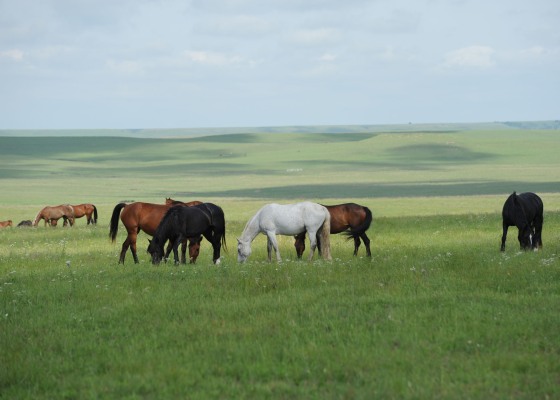
Wild horses removed from federal lands set aside for them, are now grazing on private lands in Kansas, costing millions of taxpayer thanks to DOI/ BLM mismanagement. Slaughter the things says local Paint horse breeder, crabbing about the cost.
The State is not Nevada where you might expect to hear the word slaughter in connection with our iconic Mustangs, say from someone like Callie Hendrickson. However, it is early days. Instead the words “wild horses” and “slaughter” were uttered in the state of Kansas.
The BLM is stockpiling wild horses in Kansas by the thousands, costing the taxpayer millions.
NBC station KSN Channel 3 Wichita reports:
Today 9,593 Mustangs call Kansas home, occupying almost 77,000 acres of the Sunflower State.Wasn’t taking wild horses off their federally protected lands to make way for cattle, mining and other interests and then moving them to the prairies of the Midwest central to the Salazar Plan? Maybe it’s just me, but I don’t remember paying private ranchers millions to hold wild horses on private lands being part of it.
Last year, The Wild Horse and Burro Program cost $75 million. Some goes to horse adoption programs, research and range monitoring but a lot goes to the ranchers, who provide the land and food for these transplanted horses to live.
They’re paid about $1.30 per horse, per day. At one Kansas ranch, where there are 4,400 Mustangs, that equals a paycheck of over $2million each year.
The only voice of reason in the entire report comes from Karen Everhardt who runs The Rainbow Meadows Equine Rescue and Retirement:
Karen Everhardt is adamant that the BLM’s program is not only broken, but abusive. Not all BLM horses end up running free on Kansas land.Here comes the kicker.
“Some of those horses remain in those intermediate holding facilities for a long, long time and they’re nothing more than a feedlot. Nothing more. In the mud, with no protection, out in the deserts,” said Everhardt.
Everhardt maintains the program has turned into an issue of greed and cheap grazing units. She says all the BLM has to do is let the horses go back to where they came from and instead focus on birth control and creating water and food for them in the wild.
“What motivates us as human beings to think that we are so omnipotent that we know how to do it better than they know how to do it themselves? They’ve been doing it for hundreds of years. We’ve been doing it for 30,” said Everhardt.
Not far from Rainbow Meadows, Carl Thurow’s prized Paint Horses devour their afternoon treat.Charming.
“Horses are my life,” said Thurow.
Thurow says he loves horses but his answer to the wild horse issue is very different.
“The taxpayer is just paying to keep horses alive, for what?” said Thurow.
He agrees with the BLM, that if left in the wild, the overpopulation would be devastating. Thurow believes it only makes sense to re-open horse slaughter plants.
“Those excess animals, the old animals that they call off, we take them to the horse slaughter [plant] and then they create good for somebody. You know, there’s somebody that benefits from those horses and it’s not a drain on our national economy taking care of these things,” said Thurow.
With the EPA registering PZP birth control as a pesticide categorizing our Mustangs as vermin, terrorizing them as wranglers try to dart them with this experimental drug, and the word slaughter starting to turn up in the media as the solution for the wild horse long-term holding “problem,” has it ever been a worse time to be an American Mustang?
How about the last 30 years?









No comments:
Post a Comment